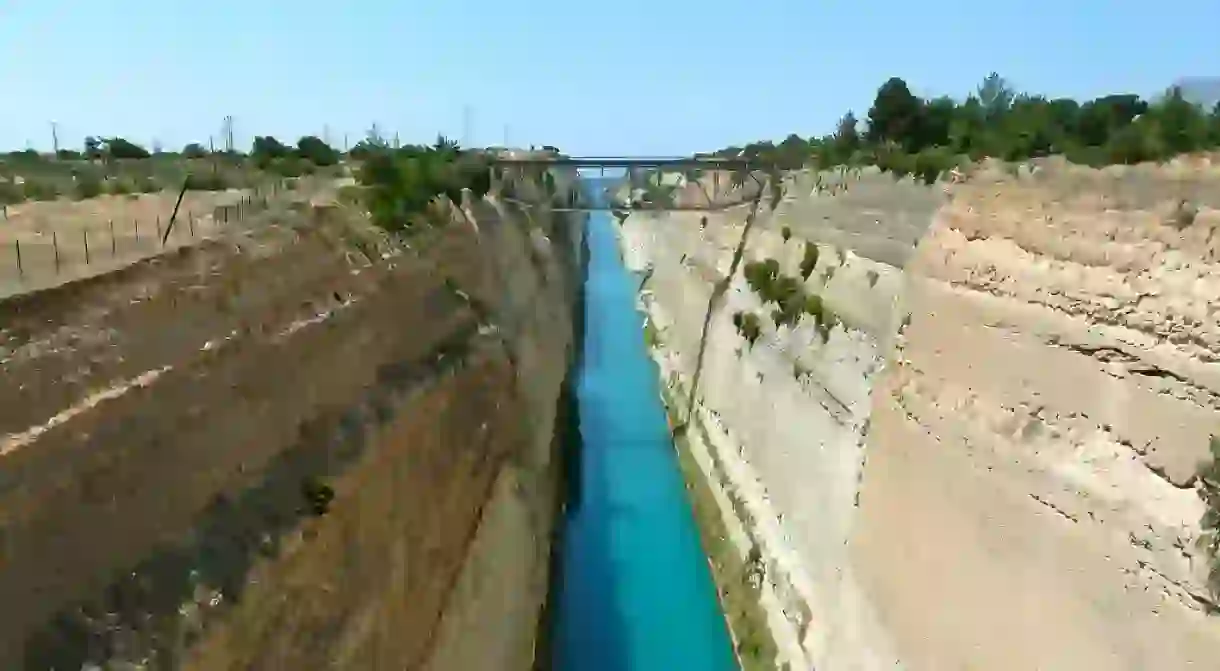A Brief History Of The Corinth Canal

The Corinth Canal is a waterway that crosses the narrow isthmus of Corinth to link the Gulf of Corinth to the Saronic Gulf. As such, the canal separates the Greek mainland from the Peloponnese, turning it into an island. Read below to learn more about the history of this canal.
The Corinth Canal is an important navigational route which once allowed ships to enter the Aegean Sea. Dug through the isthmus at sea level, the canal is 6.4 kilometers long with a width of only 25 meters. Impossible for modern ships to go through, the canal has now lost any significant economic importance it once had.
The canal, though executed in the late 19th century, has been a 2000-year-old dream. Before its construction, ships in the Aegean Sea that wanted to cross to the Adriatic or anchor in Corinth, a rich shipping city, had to circle the Peloponnese, which would prolong their journey an extra 185 nautical miles.

It is believed that Periander, the tyrant of Corinth (602 BC), was the first to conceive of the idea of digging the Corinth Canal. As the project was too complicated given the limited technical capabilities of the times, Periander constructed the diolkós, a stone road which allowed ships to be transferred on wheeled platforms.
Later on, Macedonian king Dimitrios Poliorkitis (c. 300 BC) tried to dig the canal, but his team of engineers warned him that if a connection between the seas were made, the Adriatic would flood the Aegean. This same belief also stopped dictator Julius Caesar and emperors Hadrian and Caligula. It was only in 67 AD that Emperor Nero attempted the construction of the canal with a group of 6,000 slaves. But he was murdered before the plans were finalized.
Much later, in the 1830s, Kapodistrias, the newly appointed governor of Greece after the fall of the Ottoman Empire, was the first to reconsider the idea of the canal. However, at an estimated cost of 40 million French francs, the project was too expensive for the newly established state. It was only in 1869 that the Parliament authorized the government to allow a private company, headed by Austrian General Etienne Tyrr, to build the Canal of Corinth. Work began in 1882, but the Austrian company’s budget was insufficient. So the project was paused, with it restarting in 1890 by a Greek company with a capital of five million francs. This time, the job was completed, and the canal was used for the first time on October 28, 1893.

Because the canal is quite narrow, it requires regular closures to allow for repairs. And while modern ships cannot use it, tourists can; several companies offer a cruise through the canal with a departure from Piraeus port. And for adventurers, the bridge connecting the peninsula to the mainland is ideal for bungee jumping.













